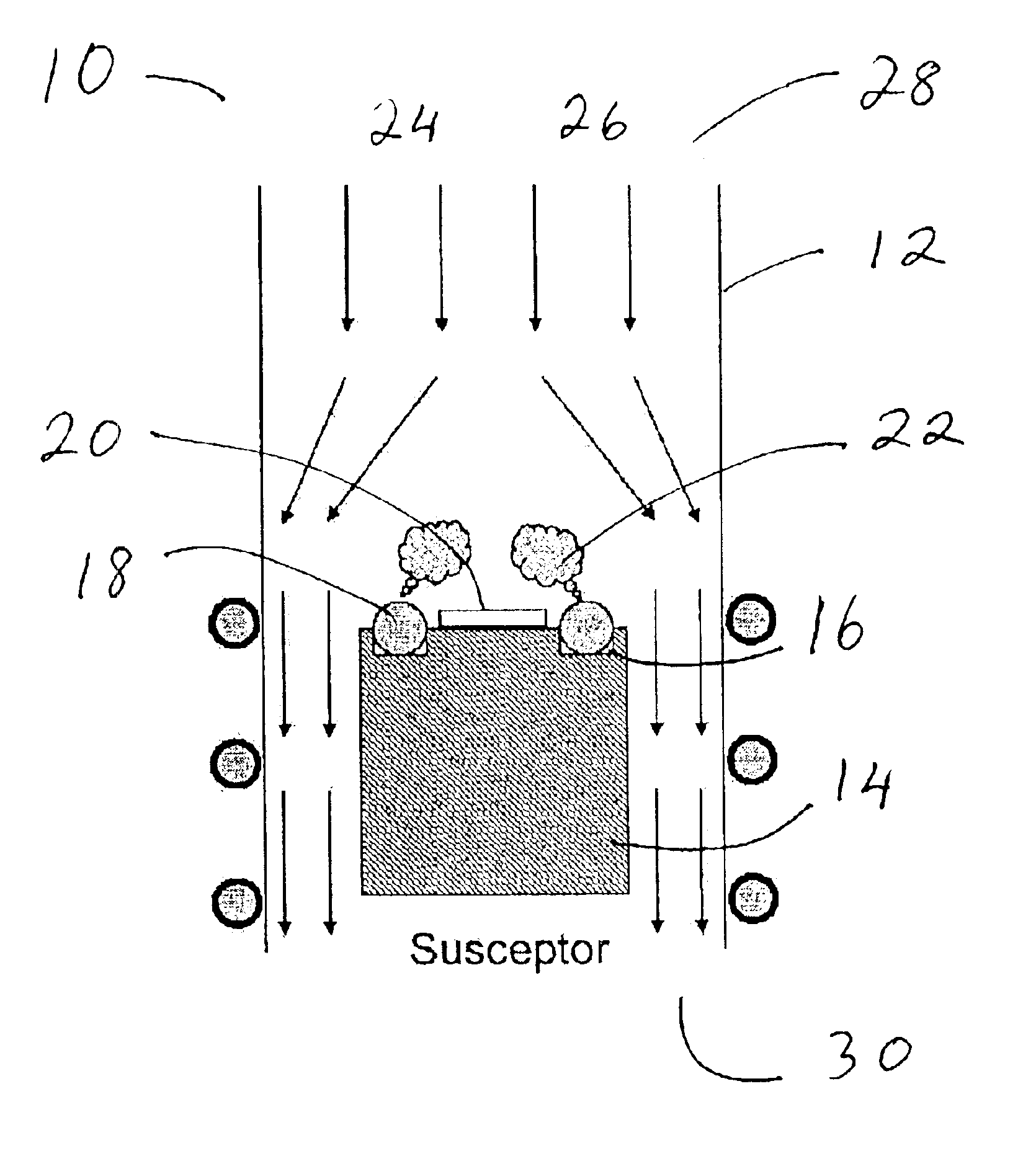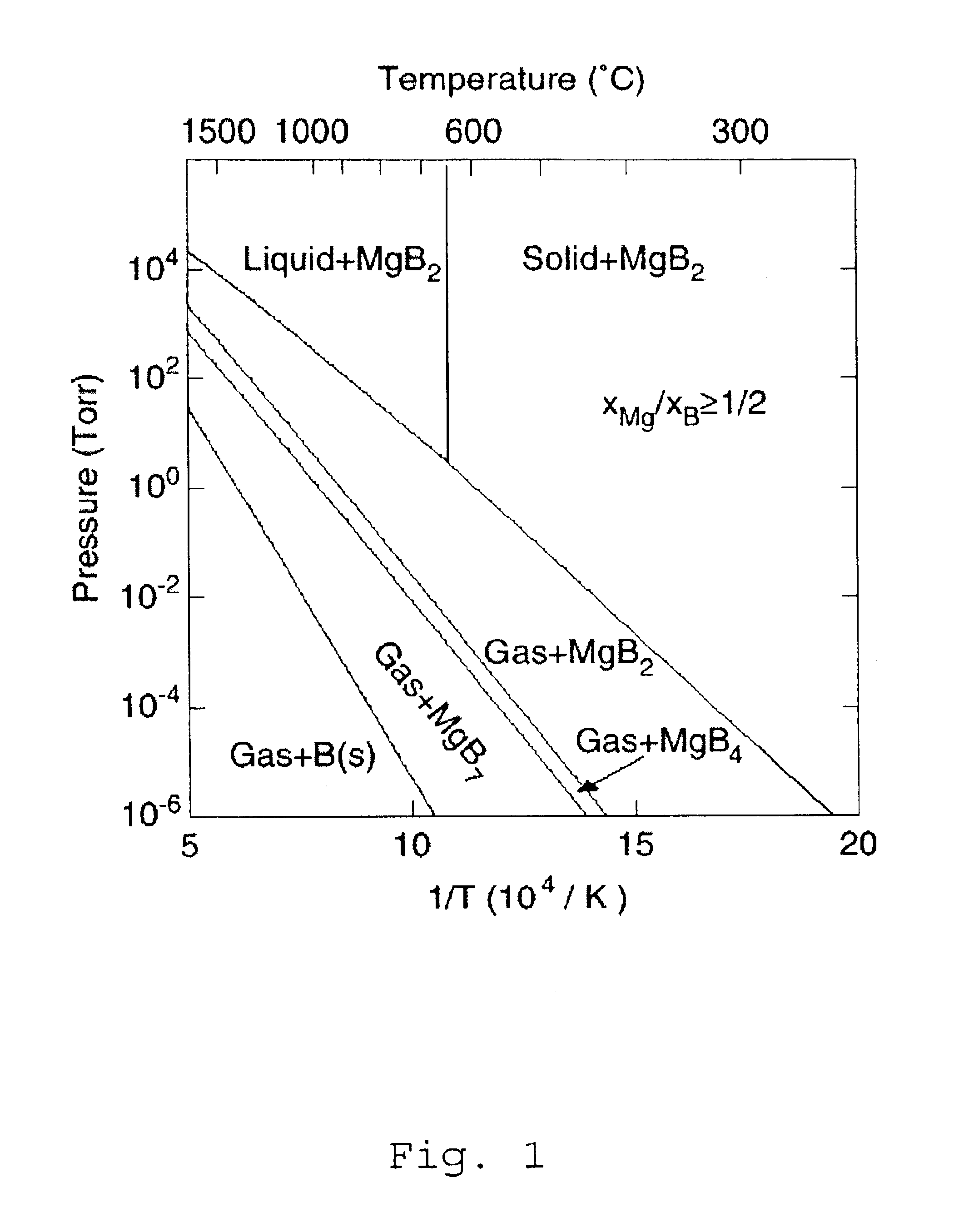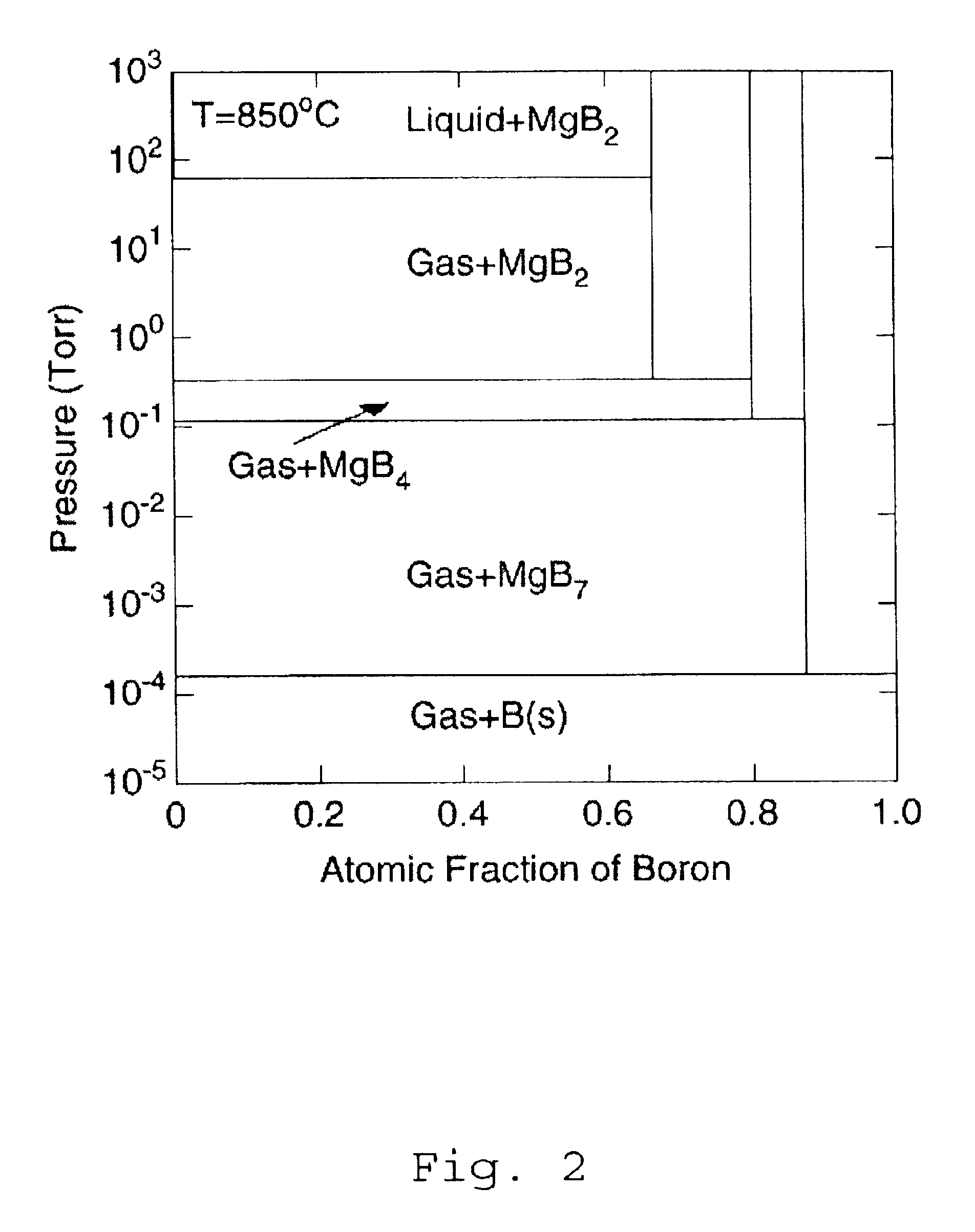Method for producing boride thin films
a thin film and boride technology, applied in the direction of crystal growth process, solid state diffusion coating, superconductor devices, etc., can solve the problems of inability to achieve inability to meet the needs of most electronic applications, and inability to achieve reproducible hts josephson junctions with sufficiently small variations in device parameters. achieve high critical temperature, high purity, and low roughness
- Summary
- Abstract
- Description
- Claims
- Application Information
AI Technical Summary
Benefits of technology
Problems solved by technology
Method used
Image
Examples
Embodiment Construction
The present invention contemplates forming thin films by combining the techniques, in part, of a physical vapor deposition (PVD) process with that of a chemical vapor deposition (CVD) process. This hybrid physical chemical vapor deposition (HPCVD) process addresses various problems arising in fabricating thin films of superconducting materials, which often need high purity and morphological integrity for efficient superconducting properties and which are not readily achieved by either PVD or CVD individually.
Although the present invention is suited for depositing superconducting materials, other thin film materials are also contemplated. The present methods can achieve forming high purity films by reducing or eliminating the need for organometallic compounds, as is typically used in CVD or metalorganic CVD (MOCVD). The metal or metal source is provided by physically generating vapor from a source material, such as practiced with PVD. A separate precursor is combined with the source ...
PUM
| Property | Measurement | Unit |
|---|---|---|
| pressure | aaaaa | aaaaa |
| temperature | aaaaa | aaaaa |
| pressure | aaaaa | aaaaa |
Abstract
Description
Claims
Application Information
 Login to View More
Login to View More - R&D
- Intellectual Property
- Life Sciences
- Materials
- Tech Scout
- Unparalleled Data Quality
- Higher Quality Content
- 60% Fewer Hallucinations
Browse by: Latest US Patents, China's latest patents, Technical Efficacy Thesaurus, Application Domain, Technology Topic, Popular Technical Reports.
© 2025 PatSnap. All rights reserved.Legal|Privacy policy|Modern Slavery Act Transparency Statement|Sitemap|About US| Contact US: help@patsnap.com



